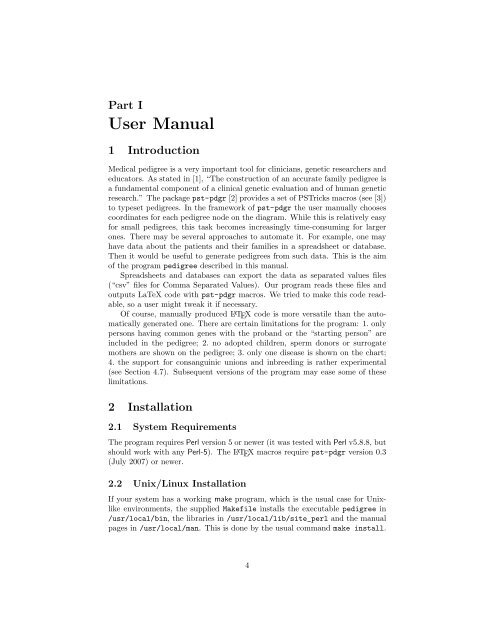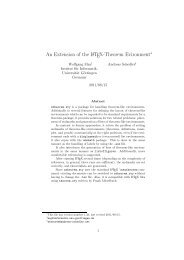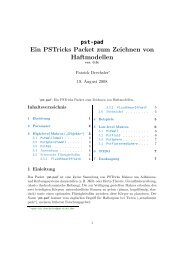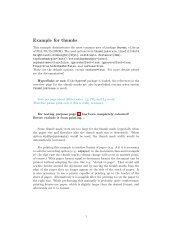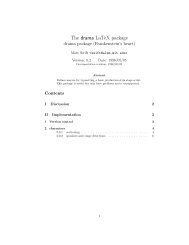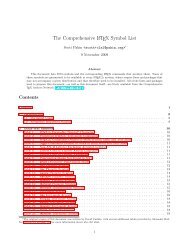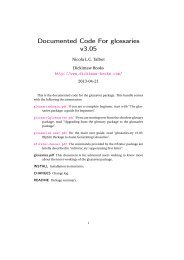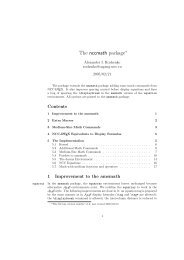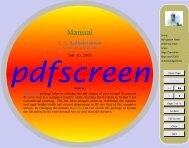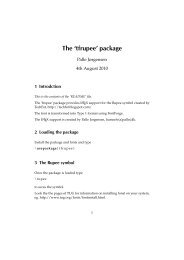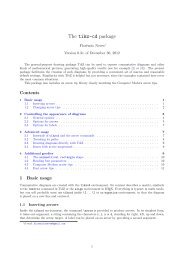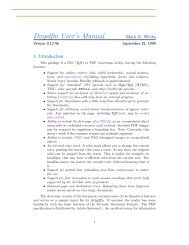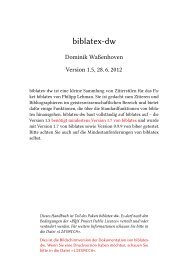pedigree.pdf. - FTP Directory Listing
pedigree.pdf. - FTP Directory Listing
pedigree.pdf. - FTP Directory Listing
Create successful ePaper yourself
Turn your PDF publications into a flip-book with our unique Google optimized e-Paper software.
Part I<br />
User Manual<br />
1 Introduction<br />
Medical <strong>pedigree</strong> is a very important tool for clinicians, genetic researchers and<br />
educators. As stated in [1], “The construction of an accurate family <strong>pedigree</strong> is<br />
a fundamental component of a clinical genetic evaluation and of human genetic<br />
research.” The package pst-pdgr [2] provides a set of PSTricks macros (see [3])<br />
to typeset <strong>pedigree</strong>s. In the framework of pst-pdgr the user manually chooses<br />
coordinates for each <strong>pedigree</strong> node on the diagram. While this is relatively easy<br />
for small <strong>pedigree</strong>s, this task becomes increasingly time-consuming for larger<br />
ones. There may be several approaches to automate it. For example, one may<br />
have data about the patients and their families in a spreadsheet or database.<br />
Then it would be useful to generate <strong>pedigree</strong>s from such data. This is the aim<br />
of the program <strong>pedigree</strong> described in this manual.<br />
Spreadsheets and databases can export the data as separated values files<br />
(“csv” files for Comma Separated Values). Our program reads these files and<br />
outputs LaTeX code with pst-pdgr macros. We tried to make this code readable,<br />
so a user might tweak it if necessary.<br />
Of course, manually produced L ATEX code is more versatile than the automatically<br />
generated one. There are certain limitations for the program: 1. only<br />
persons having common genes with the proband or the “starting person” are<br />
included in the <strong>pedigree</strong>; 2. no adopted children, sperm donors or surrogate<br />
mothers are shown on the <strong>pedigree</strong>; 3. only one disease is shown on the chart;<br />
4. the support for consanguinic unions and inbreeding is rather experimental<br />
(see Section 4.7). Subsequent versions of the program may ease some of these<br />
limitations.<br />
2 Installation<br />
2.1 System Requirements<br />
The program requires Perl version 5 or newer (it was tested with Perl v5.8.8, but<br />
should work with any Perl-5). The L ATEX macros require pst-pdgr version 0.3<br />
(July 2007) or newer.<br />
2.2 Unix/Linux Installation<br />
If your system has a working make program, which is the usual case for Unixlike<br />
environments, the supplied Makefile installs the executable <strong>pedigree</strong> in<br />
/usr/local/bin, the libraries in /usr/local/lib/site_perl and the manual<br />
pages in /usr/local/man. This is done by the usual command make install.<br />
4


